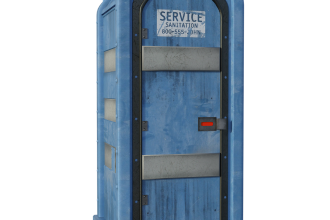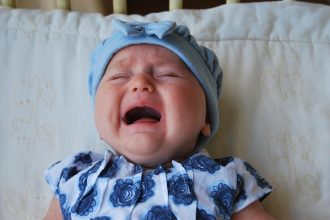Selecting the right toys for a baby’s first year is pivotal, as this period shapes motor skills, cognitive abilities, and sensory development. Toys that support exploration and learning are more than mere entertainment—they are essential tools enriching an infant’s growth journey. Understanding the types of toys most beneficial during this stage can empower parents and caregivers to foster curiosity and skill-building effectively. From Montessori-inspired objects to interactive products by renowned brands like Fisher-Price and VTech, the world of toys tailored for infants is vibrant and varied. This diversity serves different milestones, from grasping and stacking to auditory engagement and problem-solving. Navigating this array requires knowing which toys provide the greatest developmental benefits while ensuring safety and appropriateness for the child’s age and capabilities.
As infants reach their first birthday, their personalities and skills flourish at an astonishing rate. Toys need to accommodate this rapid progression, often demanding multi-sensory stimulation and adaptability. For example, open-ended toys such as wooden blocks encourage creativity and fine motor skills, while musical play mats nurture auditory senses and coordination. Choosing such playthings also involves keeping in mind quality and materials, preferring those without harmful substances, especially as babies explore objects orally. Expert advice from pediatricians and early childhood development studies offer guidance on toy selection, emphasizing gradual challenges tailored to each child’s pace. Together with reliable resources, caregivers can confidently invest in toys that bolster physical movements like crawling and early walking alongside cognitive leaps like shape recognition and cause-effect understanding.
Numerous brands have made significant contributions to educational play, including Lamaze and Melissa & Doug, known for combining fun and learning seamlessly. These toys not only entertain but also build foundational skills such as hand-eye coordination and problem-solving, vital in this sensitive developmental window. The availability of specialized toys adapted to each milestone ensures that infants receive targeted stimulation, essential for brain plasticity and sensory processing. Furthermore, playtime becomes an opportunity for social bonding, as parents engage with their babies through interactive toys that encourage communication and mimicry. In this modern era, leveraging these thoughtfully designed toys opens doors to healthier, happier childhoods grounded in quality experiential learning.
Why Motor Skill Toys Are Crucial for Infants in Their First Year
Motor skill toys represent a cornerstone in the developmental phase of babies aged around 1 year. These toys offer targeted support to enhance fine and gross motor abilities, improving coordination and dexterity as infants experiment with movement. At twelve months, babies typically begin to sit independently, crawl actively, and take their first steps, necessitating safe, engaging tools that encourage these physical abilities. Toys crafted for this stage, such as stacking cups and shape sorters, invite infants to manipulate objects, fostering hand control and precision.
Engagement with motor skill toys also sparks cognitive development. For example, when babies solve puzzles or drop shapes into matching slots, they gain experiential knowledge about spatial relationships and problem-solving. This early learning fosters curiosity and sets the stage for more complex reasoning tasks later. The integration of sensory elements—like different textures and colors—enhances sensory processing by encouraging infants to explore various tactile and visual stimuli.
Among the most popular motor skill toys are those from brands such as Infantino and Bright Starts, which focus on safe, infant-friendly designs. Toys like motorized push walkers or interactive activity cubes blend physical exercise with sensory input, motivating little ones to move and explore their environments actively. When choosing motor skill toys, caregivers should prioritize those with:
- Non-toxic, durable materials: Babies put toys in their mouths, so avoiding harmful substances is critical.
- Size appropriate for safe handling: Avoid small parts that could pose choking hazards.
- Multi-sensory features: Textures, sounds, and bright colors attract attention and aid learning.
For caregivers interested in supporting motor development, resources like guides on motor skill support provide insightful tips on integrating play effectively into daily routines. These interactive play experiences can significantly enhance growth while deepening emotional bonds between baby and parent.
| Motor Skill Toy | Developmental Benefits | Ideal Features |
|---|---|---|
| Stacking Cups | Enhances hand-eye coordination and fine motor skills | BPA-free plastic, colorful, different sizes for stacking |
| Shape Sorter | Teaches shape recognition, problem-solving, and precision | Rounded edges, wooden or durable plastic |
| Interactive Activity Cube | Develops fine motor skills, sensory stimulation, and cognitive engagement | Multi-activity surfaces, safe materials, engaging sounds and textures |
Top Categories of Toys Supporting Infant Development at Age One
The variety of toys beneficial for infants around their first year is extensive. Knowing which categories best support developmental milestones helps parents choose gifts and playthings that matter most. Some established categories include:
- Montessori-style toys: Promote independence and concentration through natural materials and simple designs.
- Musical and sensory toys: Brands like Baby Einstein and Manhattan Toy offer sound-based and textured products that boost auditory and tactile development.
- Push and pull toys: Encourage gross motor skills and balance as babies take their initial steps.
- Building toys: Classic wooden blocks from Melissa & Doug foster creativity and spatial awareness.
- Interactive learning toys: Products from VTech and Fisher-Price combine fun and education with buttons, lights, and interactive features.
Exploring how each category aligns with specific developmental domains clarifies their importance. For example, musical toys enhance auditory processing and rhythmic skills while building toys nurture precision and problem-solving capabilities. Montessori toys are particularly celebrated for encouraging independent exploration without overwhelming stimuli, guiding babies to focus calmly while refining motor precision.
Incorporating toys from diverse categories into play routines exposes infants to broad experiences, aligning with holistic development. Consider also how developmental benefits can be optimized through repeated play and parental interaction, turning toy time into quality bonding moments. Parents can also visit trusted resources such as this detailed guide to motor skill support for helpful advice on matching toys to baby’s current skills and interests.
| Toy Category | Developmental Domains Supported | Recommended Brands |
|---|---|---|
| Montessori Toys | Fine motor skills, independence, concentration | Melissa & Doug, Grimm’s, Ulanik |
| Musical & Sensory Toys | Auditory processing, sensory integration, hand-eye coordination | Baby Einstein, Manhattan Toy, Lamaze |
| Push & Pull Toys | Gross motor skills, balance, coordination | Fisher-Price, Skip Hop, Hape |
| Building Toys | Creativity, spatial awareness, fine motor skills | Melissa & Doug, LEGO DUPLO, Grimm’s |
| Interactive Learning Toys | Cognitive development, language skills, memory | VTech, Fisher-Price |
Essential Considerations When Choosing Developmental Toys for Babies
Ensuring the best for your baby means more than picking the most popular toy. Particular attention must be paid to safety, materials, and age appropriateness. As infants often put everything in their mouths, toys made from non-toxic, durable materials such as polished wood or BPA-free plastics are highly recommended. Quality certifications and parental reviews provide reliable guidance when assessing products.
Size and weight of toys also matter greatly. Toys should be easy for small hands to grasp without causing strain or choking hazards. The design must avoid detachable small parts and sharp edges. Moreover, choosing toys that challenge but do not overwhelm is key; this ensures that children remain engaged and motivated without frustration.
Some top tips for purchasing developmental toys include:
- Prioritize classic toys with proven benefits: Items like stacking rings and wooden blocks stand the test of time.
- Look for multi-purpose toys: Those that combine physical activity with sensory engagement are particularly effective.
- Check for sustainability and ethical manufacturing: Brands such as Grimm’s and Selecta offer eco-friendly options supporting responsible consumerism.
- Read up on the latest safety guidelines: Regularly visiting sources like healthcare advice pages keeps you up to date.
- Consider toys that grow with your child: Sets like LEGO DUPLO provide expanding possibilities from infancy to toddlerhood.
| Selection Criteria | Explanation | Practical Example |
|---|---|---|
| Material Safety | Toys should be made from non-toxic, hypoallergenic materials | Natural wood blocks coated with water-based paint |
| Size & Weight | Appropriate for infants’ hand size, light enough for easy handling | Soft plush toys with no small detachable parts |
| Developmental Appropriateness | Matches the child’s current abilities, provides a balanced challenge | Shape sorters with simple shapes progressing to complex puzzles |
Exploring the varied offerings from brands like Tiny Love and Infantino with awareness of these factors equips parents to provide rich playtime experiences that truly support development in this formative first year.
How Motor Skill Toys Accelerate Cognitive and Sensory Development in Babies
The impact of motor skill toys transcends mere physical progression, significantly boosting cognitive and sensory faculties during infancy. Engaging with toys that require grasping, stacking, or rolling helps develop the baby’s brain pathways connected to problem-solving, planning, and cause-effect understanding. For instance, a ball ramp toy demonstrates physical cause (rolling ball) and effect (ball arrives at bottom), instilling early scientific thinking.
Moreover, motor skill toys enhance sensory integration by exposing infants to diverse textures, shapes, and sounds. This multisensory input promotes neurological development and supports later skills such as language acquisition and emotional regulation. Notably, interactive toys from companies like Fisher-Price and VTech incorporate lights and sounds responsive to the baby’s actions, reinforcing action-reaction learning loops.
Regular play with such toys also nurtures concentration, patience, and self-confidence. When a baby successfully completes a stacking challenge, the resulting satisfaction encourages further exploration and learning, sparking a positive developmental cycle. Early interventions through play may even help detect and address motor delays promptly, allowing for timely therapeutic support.
| Developmental Area | Role of Motor Skill Toys | Example Toy Type |
|---|---|---|
| Cognitive Development | Enhances problem-solving and cause-effect understanding | Ball ramps, shape sorters |
| Sensory Processing | Stimulates tactile and auditory senses via diverse textures and sounds | Textured balls, musical interactive toys |
| Emotional Growth | Builds self-esteem through achievement and positive feedback | Stacking rings, puzzle blocks |
For additional insights, parents interested in optimizing playtime can consult expert articles on motor development support and research. Incorporating these toys thoughtfully into everyday routines offers a dynamic foundation for lifelong learning and well-being.
Frequently Asked Questions Regarding Developmental Toys for One-Year-Olds
- Which toys are essential for a one-year-old’s development?
Motor skill toys like stacking cups, shape sorters, and push toys that promote gross and fine motor skills, sensory engagement, and cognitive learning are essential. - How do you choose safe toys for one-year-old children?
Prioritize toys without small parts, made from non-toxic materials, appropriately sized for little hands, and compliant with safety standards. Regularly inspect toys for damage. - What types of play benefit a one-year-old’s motor skill advancement?
Activities involving reaching, grasping, stacking, and walking with push toys support motor skills effectively. - Which brands are well-regarded for infant developmental toys?
Fisher-Price, VTech, Lamaze, Manhattan Toy, Bright Starts, Infantino, Skip Hop, Baby Einstein, Melissa & Doug, and Tiny Love are trusted brands recognized for quality and innovation. - How can parents integrate these toys to maximize development?
Creating structured play sessions with alternating toy types—fine motor, sensory, and gross motor—engaged alongside attentive interaction fosters comprehensive growth.


